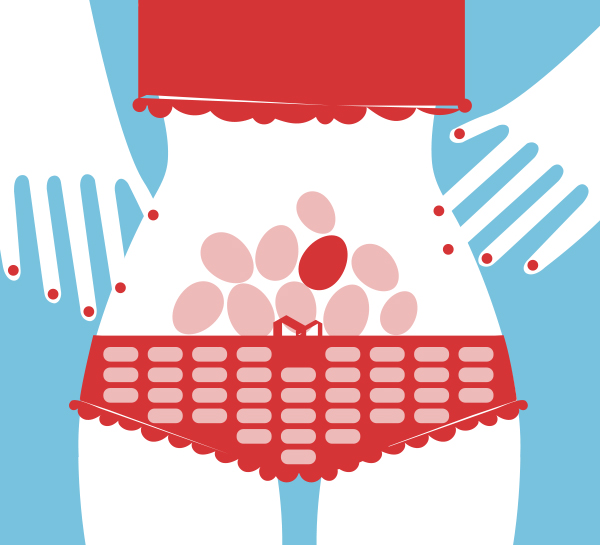A new report has been released on the back of exclusive research that shows a large majority (69%) of women aged 45-60 feel invisible to brands and advertisers.
The insight-packed report by The Behaviours Agency also shows that only 7% think they’re very well represented in advertising and 62% think that advertising targeted at them rarely shows someone they can relate to.
Starting with the release of the report, a new campaign to increase understanding of 45-60 year olds, to drive positive change of both how women are perceived and represented, is being spearheaded by The Behaviour Group’s owner-director and mid-lifer herself, Sue Benson.

She says: “Forbes calls them ‘super consumers. They make or influence a staggering 90% of household budgetary decisions in the U.K. but to be successful at reaching and resonating with this key demographic we need to look beyond ‘the menopause. Menopause is just ONE of the reasons this cohort feels invisible.”
Citing findings from the research demonstrating the issue, Sue highlights:
“Overall, women expressed a strong desire for more diverse and realistic representation that mirrors their own lives and challenges.
“Giving their view on advertising, only 7% said they felt very well represented in advertising. 24% said “well” but a third (32%) believe “not well”, with 7% not at all and 25% not very well (37% weren’t sure).
“One of the main concerns expressed by midlife women is the lack of relatable role models and representation in advertisements. They argue that the absence of women in their age group in advertising reinforces harmful stereotypes and unrealistic beauty standards. This perceived invisibility only serves to compound the pressure many midlife women feel to conform to societal ideals.
“Many women feel that brands predominantly focus on younger generations, perpetuating stereotypes that don't reflect their interests, values, or aspirations. As a result, they feel marginalized and underappreciated by the marketing industry.
“72% are sceptical about the claims made in advertisements. 75% thinks ads focus too much on appearance rather than overall wellbeing and 72% feel ads often set unrealistic standards of beauty. 62% feel advertising targeted at them rarely shows someone they can relate to.”
Not invisible; just ignored
Summing up feelings of this audience, Louise Baker, a 50-year-old professional from Manchester, commented on the issue, stating, "We're not invisible; we're just ignored. It's frustrating when the marketing world seems to think that the only things midlife women are interested in are anti-aging creams and laundry detergent. We have diverse interests, and we want to see ourselves reflected in the advertisements we encounter daily."
They also feel that increased dialogue around menopause is confusing and fast becoming ‘noise’
“Naturally the menopause was a significant factor in these women’s lives – but they were quick to point that they don’t want it to define them, something which many brands are guilty of.
“41% said there’s not enough help and information around menopause, 34% said the amount of help is about right and 17% said it’s hard to work out what information is helpful or useful. 8% simply feel overwhelmed now about the information that’s out there – so much so it’s become noise.
“The women we spoke to told us that they wanted menopause-related products and communications to be addressed more subtly, focusing on solutions rather than labelling everything as “for menopause.” It can come across as pigeonholing, alienating or feeling like a brand is jumping on the bandwagon.”

Anne Bonson-Johnson
The research also found that while they’re increasingly being stereotyped as ‘struggling’ with menopausal issues, in fact, change beyond menopause is the dominating and uniting narrative in midlife women’s lives.
“While the Midlife Women cohort is extremely diverse, change is a universal theme that comes out throughout our study – from change in personal circumstances (divorce, career changes, children leaving home, and caring for elderly relatives etc) and physical and hormonal changes (due to the menopause), to attitudinal changes to life in general.
“Alongside these changes comes a natural shift in shopping behaviours as consumers seek out new products, solutions and habits to suit a new outlook or physical appearance.
“We discovered that 42 per cent of midlife women have changed their diets or are buying more nutritional food; more than a third (36 per cent) have changed their skin and haircare products; 35 per cent are now exercising more and a further 35 per cent have bought new clothing to suit their changing body shape.
“There is massive potential for brands to tap into this spending power and aptitude to find new solutions – if targeted correctly.”
They’re NOT taking a woe-is-me attitude to menopausal change and aliments
Both the quantitative and qualitative elements of The Behaviour Agency’s study pointed to some surprising findings regarding self-care and happiness among midlife women. The very varied ways people cope with change was most clearly demonstrated when looking at how active women are at managing their own health.
There is a distinct YOLO spirit among many. Almost half (43%) feel the necessary changes associated with midlife have improved their lives.
“I’m just not sure ‘society’ and decision makers in companies who are trying to appeal to midlife women are really keeping up with what women’s attitudes to midlife really are”, says Sue.
“Of course, the increase in information about menopause is positive, no one can fault the efforts being made to recognise how symptoms can affect women experiencing its various stages, but a key out-take from our research was that there are huge differences in how people respond to the hand they have been dealt and the changes they see.
“When we started this project we really thought that menopause would be ‘the’ big topic on every woman’s lips. But it really wasn’t, the spectrum of change is so vast that it just becomes one of the narratives not the only narrative.”





Al December 8th, 2023, late afternoon
Those three are invisible because they're white.